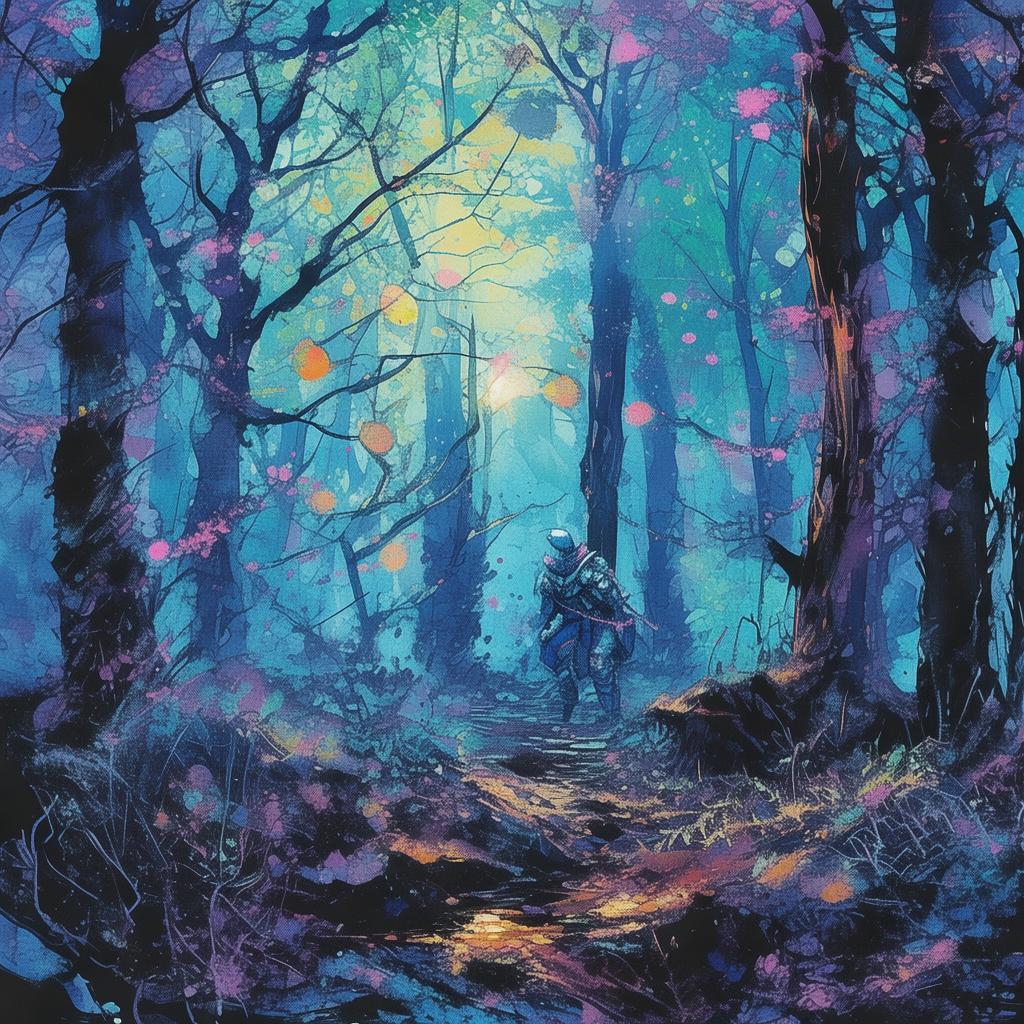Whispers of the Canvas
In the heart of Paris, beneath the cobbled streets and the whispering trees of Montmartre, there stood an ancient atelier, its windows fogged with the breath of countless artists. The atelier was the sanctuary of the renowned painter, Édouard Moreau, known for his masterful brushstrokes and the hauntingly beautiful women that graced his canvases. His most celebrated work, "The Brother's Sketch," was said to capture the essence of art and eternity itself.
The story begins in the bustling atelier, where young and eager artists gathered to learn from the master. Among them was a promising talent named Isabella, whose eyes held the fire of the unyielding spirit. She was fascinated by "The Brother's Sketch," a portrait of a young woman with eyes that seemed to pierce through time itself. Little did she know, her life was about to intertwine with the enigmatic masterpiece.
One rainy evening, as Isabella was cleaning the atelier, she stumbled upon a hidden room behind a wall of old canvases. Inside, she found a collection of letters and sketches that belonged to Édouard's brother, Louis. The sketches were of the same woman in "The Brother's Sketch," but these were more than mere renderings—they were whispers of a story that had been lost to time.
The letters revealed a tale of love, betrayal, and a quest for redemption. Louis, a once-promising artist, had fallen into a spiral of despair after his wife's death. Isabella was captivated by the depth of emotion in the sketches and the letters, which spoke of a love that transcended life and death. She became consumed by the story, feeling a strange kinship with the woman in the portrait.
As Isabella delved deeper into the story, she discovered that the woman in the portrait was her own ancestor, a woman who had been the muse for both her great-grandfather, Édouard, and her great-uncle, Louis. The letters revealed that Louis had betrayed his brother's trust and stolen his muse, leading to a lifelong rivalry that had spanned generations.
Isabella's life began to mirror the story she had found. She found herself drawn to a man who seemed to understand her pain, a man who had secrets of his own. As she grew closer to him, she realized that he was the descendant of the man who had stolen her ancestor's heart and her great-grandfather's artistry.

The climax of the story unfolds when Isabella confronts her great-uncle's descendant, who is now the owner of the atelier. The confrontation is intense, filled with revelations and emotions that have been hidden for decades. The descendant, who has been living a lie, is forced to face the truth about his lineage and the impact it has had on his life.
The story reaches its emotional peak when Isabella must choose between the life she has always known and the one that has been waiting for her. In a twist that leaves readers breathless, Isabella discovers that the true legacy of her ancestor is not the art, but the love and the strength that had been passed down through generations.
The ending is a bittersweet reflection on the power of art and the enduring nature of love. Isabella decides to honor her ancestor by continuing the legacy of her great-grandfather, not through painting, but through living a life that is true to her heart. The atelier becomes a place of healing and reconciliation, where the past and the present meet in a harmonious dance.
In "Whispers of the Canvas," readers are taken on a journey through the ages, exploring the depths of human emotion and the eternal quest for love and understanding. The story is a testament to the idea that art, like love, has the power to transcend time and bring people together, even in the face of betrayal and loss.
✨ Original Statement ✨
All articles published on this website (including but not limited to text, images, videos, and other content) are original or authorized for reposting and are protected by relevant laws. Without the explicit written permission of this website, no individual or organization may copy, modify, repost, or use the content for commercial purposes.
If you need to quote or cooperate, please contact this site for authorization. We reserve the right to pursue legal responsibility for any unauthorized use.
Hereby declared.









